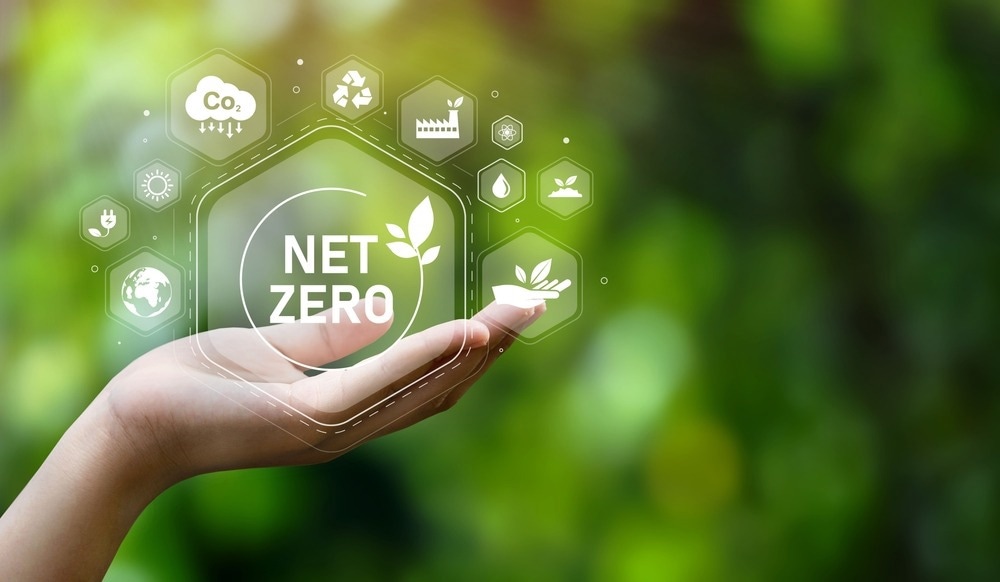AZoCleantech speaks to Dr. Melis Duyar from the University of Surrey about their contribution to clean technology research. Duyar has worked with her team to develop materials and processes to capture carbon dioxide, perform a chemical transformation of the captured carbon dioxide with hydrogen, and release the final product, which would be a carbon negative chemical.
Can you tell us briefly about your role at the University of Surrey and how you began researching cleaner fuels?
I am a Lecturer in Chemical and Process Engineering at the University of Surrey. I lead a research group focused on environmental pollution control and sustainable fuels synthesis and I also teach on a number of modules such as the Design Project, Process Operations and Management and Separation Processes, where we emphasize responsible chemical engineering practices for a sustainable future.
I started research on cleaner fuels during my Master’s degree at Columbia University. Initially, I studied hydrogen production from natural gas and learned about the carbon footprint of grey hydrogen. My project was focused on capturing the carbon dioxide released during the process, producing what is now more commonly known as “blue” hydrogen.
During my doctoral project I researched ways to utilize carbon dioxide to make other chemicals through reactions that required specific catalysts to be feasible and energy efficient.
Building on my prior work, my research evolved towards integrated carbon capture and utilization. A single reactor captures carbon from any emission source and transforms it into valuable chemicals and fuels. This is now a core research theme in my group at Surrey. With this unique approach we are able to combine two processes (carbon capture and utilization) into one, which allows us to achieve synergies in material performance and gains in energy efficiency.
How is it possible to produce cleaner fuels from carbon dioxide?
Most fuels we use today are composed of carbon and hydrogen atoms. For example, natural gas is mainly made up of methane, which contains one carbon atom bonded to four hydrogen atoms.
With a renewable source of hydrogen as a reactant, it is possible convert carbon dioxide to fuels. If the carbon dioxide is collected from the air and no additional emissions occurred during this process, the resulting fuel would be carbon neutral since its combustion results in net-zero emissions in a closed cycle.
Catalysts are surfaces that speed up reactions. It is possible to design catalysts to achieve chemical transformations of carbon dioxide to a desired product. We can use carbon dioxide from the air and hydrogen to produce different fuels. In the case of liquid fuels that could be used for decarbonizing transportation, my group is researching the production of methanol directly from the air, using what we call “dual function materials” that can both capture carbon dioxide and catalyze its chemical transformations.
How could this cleaner fuel’s value offset the cost of direct air capture?
Direct air capture (DAC) allows us to obtain a concentrated stream of carbon dioxide from air, which is a very dilute source. Once the carbon dioxide has been captured, energy is expended to be able to release it from the “adsorbent”, a solid that is able to capture carbon dioxide from a gas mixture. This energy-intensive step is a major cost contributor to direct air capture. Furthermore, once the carbon dioxide has been purified, we still need a way to either safely store it or use it as a source of carbon for chemicals synthesis, expending more energy in these processes due to transportation and further processing.
Some reactions of carbon dioxide with hydrogen release heat, while generating cleaner fuels as an end product. By performing these reactions on the captured carbon dioxide during DAC, we can use the heat released to “regenerate” the adsorbent, while using the captured carbon to directly synthesize cleaner fuels. This couples an energy-intensive process (release of carbon dioxide from adsorbent) with a heat-producing process (conversion of carbon dioxide to fuels), and the balance of energy consumed and produced is what can offset the cost of direct air capture. As an added benefit, rather than releasing concentrated carbon dioxide, this process releases a concentrated clean fuel that provides revenue for the process.
Can you outline your research project and its benefits for society?
This project aims to develop materials and processes to capture the carbon dioxide present in air, perform a chemical transformation of the captured carbon dioxide with hydrogen, and release the final product, methanol.
Methanol is the target product because of its widespread use in the chemical industry and because it can be used as a liquid fuel and stored safely.
In 2020, the UK imported £145 million worth of methanol, corresponding to 0.6-1.6 megatons of carbon dioxide emissions (depending on whether natural gas or coal was used in its production). In addition to these emissions, which would be avoided, methanol and other liquid fuels can be used to decarbonize the transportation sector that is responsible for 30% of UK emissions.
How could your technique be extended across several applications?
The global economy currently relies on processing fossil fuels composed mainly of carbon and hydrogen. Nearly every chemical and fuel we use has some fossil fuel input, regardless of whether the chemical itself contains hydrogen and carbon. Taking carbon directly from the air and hydrogen from a sustainable process (such as water splitting using renewable electricity) can enable a faster and fairer chemical industry with zero or even negative emissions.
With the right dual function material design, the applications can be extended to every part of the chemical sector by replacing the reactants that we currently make through petroleum refining, with those derived from air and renewable hydrogen.
Why is this research important for the future of our planet and in achieving net-zero goals?
To achieve net-zero goals, we must shift to a circular economy.
Coupling direct air capture with chemicals production constitutes a truly circular economic venture because any carbon dioxide released during the downstream processing and use of products will not result in a net increase in atmospheric CO2.

Image Credit: d.ee_angelo/Shutterstock.com
Through the synthesis of products with long lifetimes that are not fully combusted in their use (e.g. durable materials of construction), some carbon dioxide will be sequestered in carbon negative products. Moreover, because of the milder operating conditions we are aiming to employ, as well as the ability to obtain the reactants (carbon dioxide and renewable hydrogen) anywhere in the world, we can end the geographical inequalities in chemicals production, and establish a circular chemical industry without reliance on imported fossil fuels.
What challenges has/could your team face during your research and how have/will these be overcome?
This project presents some unique challenges due to the coupling of direct air capture, which is typically performed at ambient conditions, with a chemical reaction (methanol synthesis) that is commercially performed at elevated temperatures and pressures.
Reconciling the operating conditions of these processes would constitute a scientific breakthrough that can potentially result in lower energy requirement of the overall process compared to a decoupled DAC and methanol synthesis scenario.
Any dual-function material we use for the coupled process must be durable under air and hydrogen exposure, which presents an additional exciting scientific challenge.
My team is experienced in investigating the dynamic behaviour of materials (adsorbents, catalysts and dual function materials) under carbon dioxide capture and conversion, which is a strength we rely on to design dual function materials based on an understanding of the fundamental mechanisms at play.
What are the next steps for the project?
The immediate next step is to demonstrate that methanol can be produced directly from the air using hydrogen as input. Upon achieving this goal, it is necessary to perform fundamental experiments to understand material structure and mechanisms under dynamic chemicals synthesis. This will be coupled to modeling and optimization to allow us to accelerate the discovery of new dual-function materials for methanol production or other applications.
The goal is to set the foundation for building a circular chemical industry.
Where can readers find more information?
https://www.duyarlab.com/
https://www.surrey.ac.uk/news/cleaner-fuels-co2-promise-new-surrey-project
https://www.ukri.org/news/adventurous-ideas-to-make-net-zero-a-reality/
https://www.surrey.ac.uk/people/melis-s-duyar
About Dr. Melis Duyar
 Dr. Melis Duyar is Chemical and Process Engineering Lecturer at the University of Surrey. She has a research background in heterogeneous catalysis for energy and environmental applications.
Dr. Melis Duyar is Chemical and Process Engineering Lecturer at the University of Surrey. She has a research background in heterogeneous catalysis for energy and environmental applications.
Her current research interests are developing novel adsorbent materials for CO2 capture and catalytic materials for producing sustainable fuels and chemicals from carbon-based feedstocks.
Dr. Duyar received her B.Sc. (2012) in Chemical and Biological Engineering from Koç University in Istanbul, Turkey. She obtained her M.S. (2013) and Ph.D. (2015) in Earth and Environmental Engineering from Columbia University and conducted post-doctoral research (2015-2017) in the Chemical Engineering Department at Stanford University.
Before her academic appointment at the University of Surrey, Dr. Duyar worked at the US Department of Energy’s SLAC National Accelerator Laboratory as an Associate Staff Scientist at the SUNCAT Center for Interface Science and Catalysis and was also a Lecturer of Chemical Engineering at Stanford University (2017-2019).
Disclaimer: The views expressed here are those of the interviewee and do not necessarily represent the views of AZoM.com Limited (T/A) AZoNetwork, the owner and operator of this website. This disclaimer forms part of the Terms and Conditions of use of this website.